Blanket Systems Research
Since tritium is not available in nature, it must be produced in a fusion reactor by neutron irradiation of lithium containing pebbles. This process generates heat, which, together with the heat produced in the plasma, is used for generating electricity.
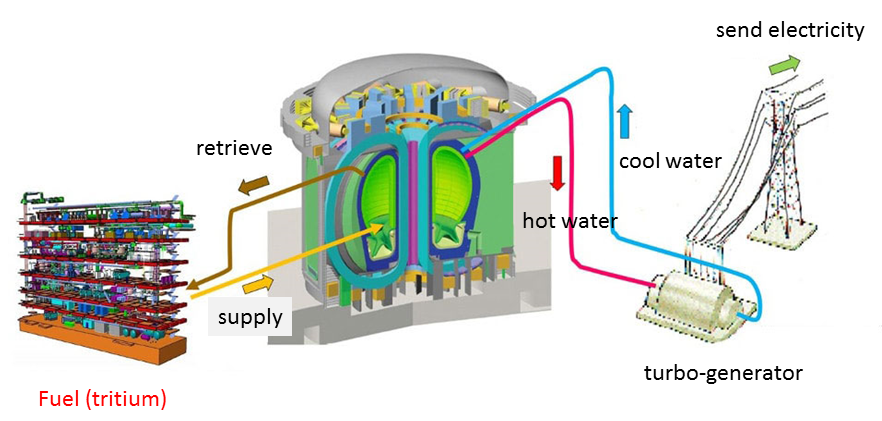
Breeding of tritium and extraction of heat for electrical power generation are carried out in boxes called blankets, installed around the plasma.
The Department of Blanket Systems Research conducts research and development on the following subjects which are important for a fusion reactor: 1) blanket design, 2) selection of materials to be filled in the blanket, 3) recovery and supply of tritium.
- Blanket design (Blanket Technology Group)
- Selection of materials to be filled in the blanket (Breeding Functional Materials Development Group)
- Recovery and supply of tritium (Tritium Technology Group)
Blanket design (Blanket Technology Group)
Boxes surrounding the plasma numbered 400 to 500, called blankets, are important equipment. The blankets extract heat from the fusion reactor for electrical power generation, and also produce fuel (tritium) for nuclear fusion.
We design a blanket that generates electricity and produces fuel (tritium) with high efficiency.
The blanket has another important function; shielding components outside the vacuum chamber (e.g. superconducting magnets) from neutrons generated in the plasma, ensuring that neutrons do not escape from the fusion reactor.
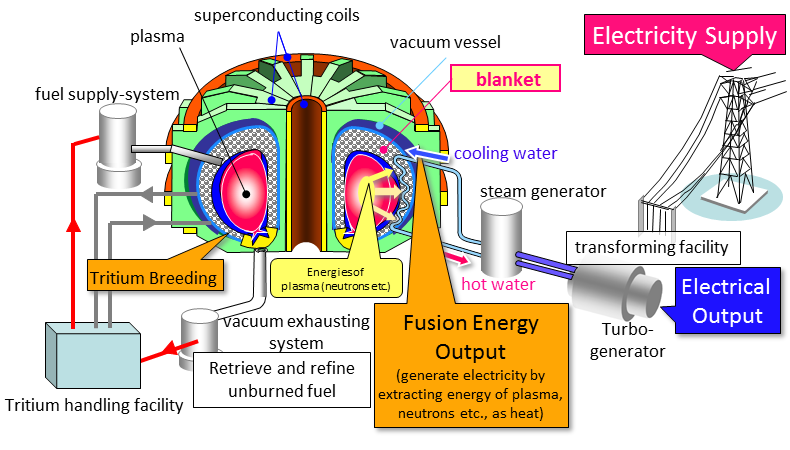
The International Thermonuclear Experimental Fusion Reactor (ITER) is under construction in France.
We prepare a blanket to install on ITER for experimentation of electricity generation and fuel (tritium) production.
This test blanket is called the ITER Test Blanket Module (TBM). In order to produce heat necessary for electricity generation and tritium as fuel for nuclear fusion, pebbles of lithium titanate (Li2TiO3) and beryllium are packed into the blanket.
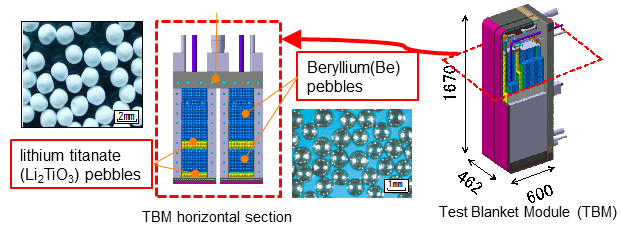
We prepare to fabricate real-scale TBM to install on ITER in France.
EU, China, Korea, and India will also perform tests using their own TBM in ITER. Therefore, we promote design and production activities with an ambition that the Japanese TBM will demonstrate the world’s best performance.
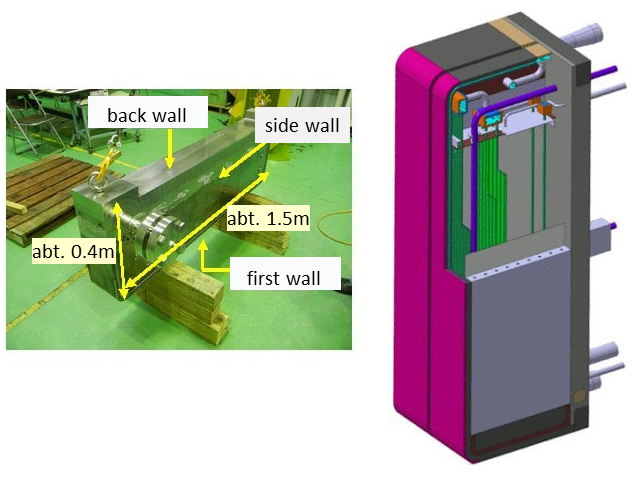
Selection of materials to be filled (Breeding Functional Materials Development Group)
During operation, the core of a fusion reactor is in a plasma state. The plasma is surrounded by blankets, which have the functions of tritium production, generation of electricity, and shielding against neutrons. The blanket is filled with neutron multipliers and tritium breeders. They are in the form of tiny pebbles of approximately 1mm in diameter and are arranged in layers for high density filling and to decrease the risk of cracking due to thermal stress.
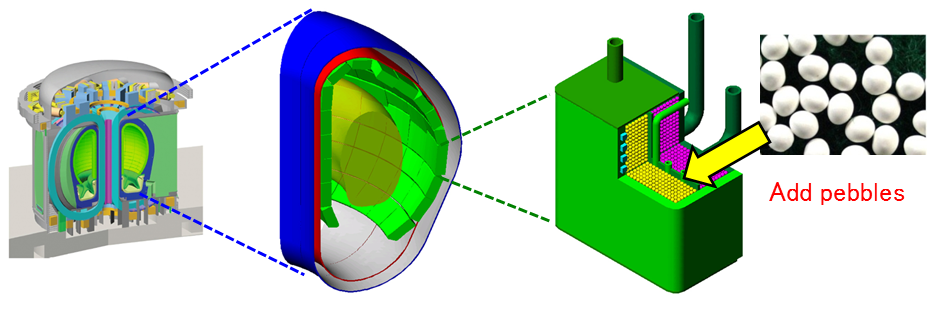
Fusion reactors produce the fusion reaction using deuterium and tritium as fuel. Deuterium can be recovered from seawater almost inexhaustibly. However, tritium does not exist in nature. Therefore, it is necessary to increase the amount of neutrons generated in a fusion reactor by use of neutron multipliers (beryllium), and to produce tritium with the reaction of neutrons and tritium breeders (lithium).
Collection of lithium from seawater, should it become possible in future, would make the fuel of a fusion reactor practically inexhaustible since lithium would be made almost unlimited.

Next, we explain fabrication of tritium breeders.
We are performing the R&D on the granulation technology of beryllide pebbles (Be12Ti etc.) which display higher stability at high temperatures compared to beryllium metal.
In this process, pebbles are fabricated by melting the upper part of a rotating beryllide rod with arc discharge, and blowing the melted beryllide with centrifugal force.
We have filed a patent for this fabrication method, which is the only promising way in the world for mass production of beryllide pebbles.
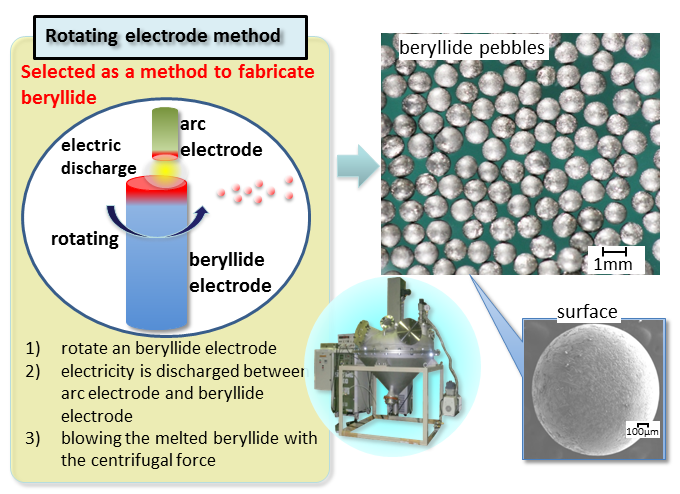
Next, we explain production of tritium breeders.
This granulator is comprised of two syringes arranged in a T-shaped flow path. One syringe is filled with oil and the other with a tritium breeder (Lithium containing ceramics) slurry. The two flow lines from the syringes are connected perpendicular to one another. This arrangement allows us to cut the tritium breeder slurry flow with an oil flow from the oil-filled syringe. The size of the tritium breeder gel spheres is controlled by the flow speeds of the oil and the slurry. The gel spheres are placed in an oil-filled container.
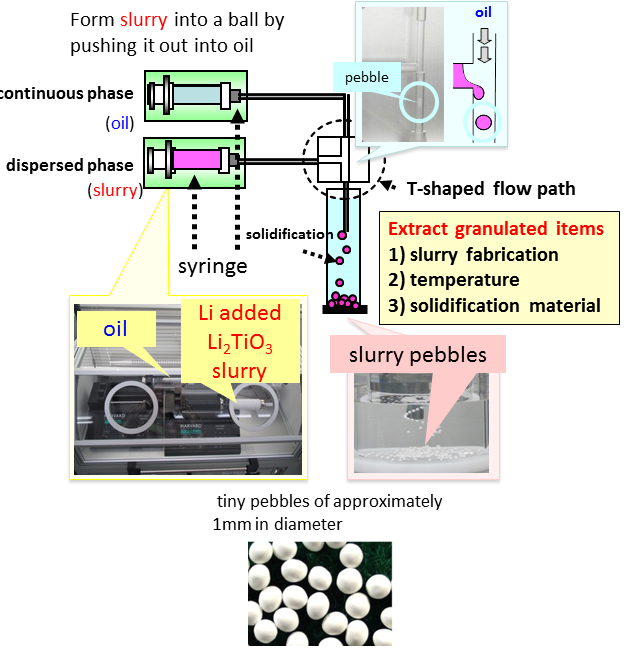
This is called an emulsion method, which enables mass production of tritium breeder pebbles at a low cost. This technology is unique to Japan.
Recovery and supply of tritium (Tritium Technology Group)
Research for fuel cycles of a fusion reactor and safe handling of tritium is performed in the facilities of National Institutes for Quantum and Radiological Science and Technology (QST) and Japan Atomic Energy Agency (JAEA).
We are focusing mainly on the following three subjects:
- Procurement activities for tritium detritiation system, which is the key safety system for ITER (specifically, performance verification test).
- Broader Approach (BA) activity: mainly on tritium tasks under DEMO design and R&D
- Implementation of basic research on tritium
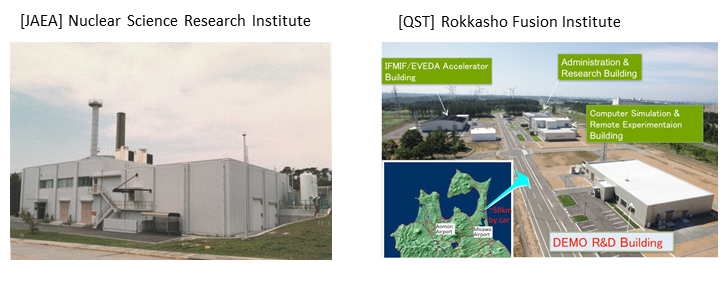
Most of the tritium gas supplied into a fusion reactor is not burned. Unburned tritium must be exhausted and processed for refueling into the fusion reactor. This is called the “fuel cycle system”.
The whole structure of the system was established by research and development (R&D), and the principle of each system technology was fully demonstrated, reaching a technology level enabling us to start constructing a real system.
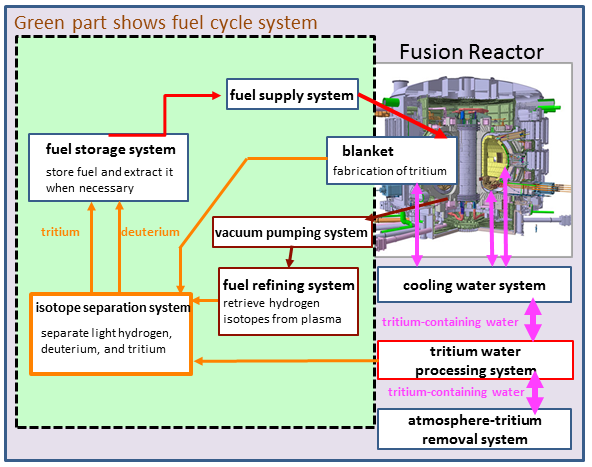
We also carry out technological development of the safe handling of tritium, fuel for a fusion reactor.
We have conducted R&D in the field of tritium safe-confinement, tritium behavior after release into a room, tritium accountancy, interaction with materials, durability, decontamination, and waste disposal etc. and continue to maintain an excellent track record of safe handling.
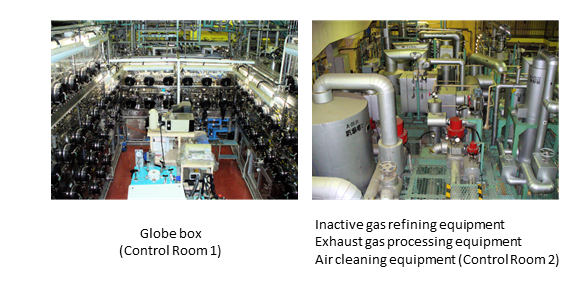
As a contribution to ITER, we carry out procurement activities of tritium detritiation system (DS).
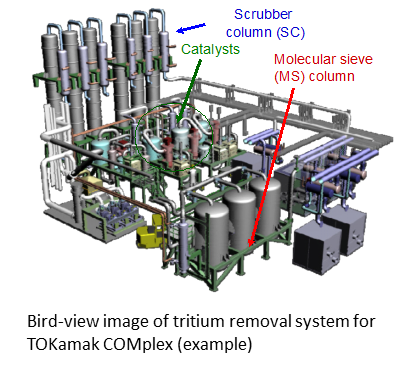
This equipment is the key for the safety of ITER. The final design, fabrication, and installation on site are undertaken jointly with the ITER Organization and its performance verification test is conducted separately in Japan.

